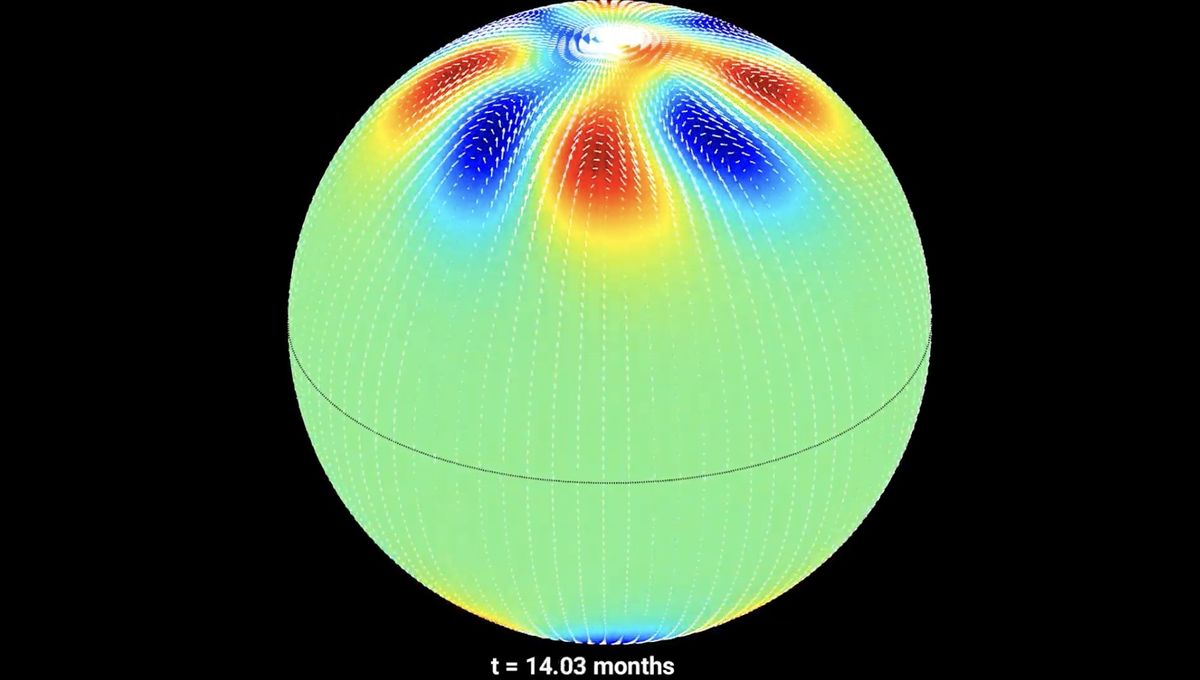
There is a lot that we do not know about the Sun but something quite shocking to most people is that we have never seen its poles. All our observations have been looking at the Sun face-on and from that disadvantaged view, scientists aim to work out what is going on there. The latest model suggests that just like Earth, the Sun’s poles are also showing polar vortices. But with a twist.
The formation and evolution of these vortices are likely driven by the powerful magnetic fields of the Sun, but the exact mechanism is a mystery. Scientists used computer models to work out how the magnetic field would behave when it reaches the higher latitudes of the Sun.
“No one can say for certain what is happening at the solar poles,” lead author Dr Mausumi Dikpati, from the National Science Foundation National Center for Atmospheric Research, said in a statement. “But this new research gives us an intriguing look at what we might expect to find when we are able, for the first time, to observe the solar poles.”
There is an important phenomenon that might be crucial to the behavior of these vortices known as the “rush to the poles”. This is not what Santa does on Boxing Day but it’s the peculiar behavior of the magnetic field. The magnetic field at the pole is met by a field of opposite polarity that starts at 55 degrees of latitude and moves poleward. These opposite fields meet every time the Sun reaches the solar maximum (like right now!).
When that happens, the magnetic field at the pole disappears before the cycle begins anew with opposite polarity. So magnetic North and magnetic South switch around every 11 years or so. This is why good timing is needed to study what goes on there. According to the model, the swirling disappears with the magnetic field. A spacecraft or telescope studying the poles now would not see them.
“You could launch a solar mission, and it could arrive to observe the poles at completely the wrong time,” said Scott McIntosh, vice president of space operations for Lynker and a co-author of the paper.
Scientists, however, knew their timing and planned for a mission to do just that. The European Space Agency’s Solar Orbiter, a cooperative mission with NASA, will be the first mission to photograph and study the poles of the Sun. On February 18, 2025, thanks to a gravitational assist from Venus, the spacecraft’s orbit will be increased to 17 degrees with respect to the Sun’s equator.
This will be increased even more in the following years, allowing the first in-depth study of the Sun’s higher latitudes and possibly helping answer many solar mysteries including the possibility of swirling vortices over the poles. Understanding the vortices and the magnetic field will help us better prepare against potentially dangerous space weather.
“Our conceptual boundary now is that we are operating with only one viewpoint,” McIntosh said. “To make significant progress, we must have the observations we need to test our hypotheses and confirm whether simulations like these are correct.”
A paper describing the vortices and their behavior is published in Proceedings of the National Academy of Sciences.
Source Link: Swirling Vortices Might Exist On The North And South Pole Of The Sun